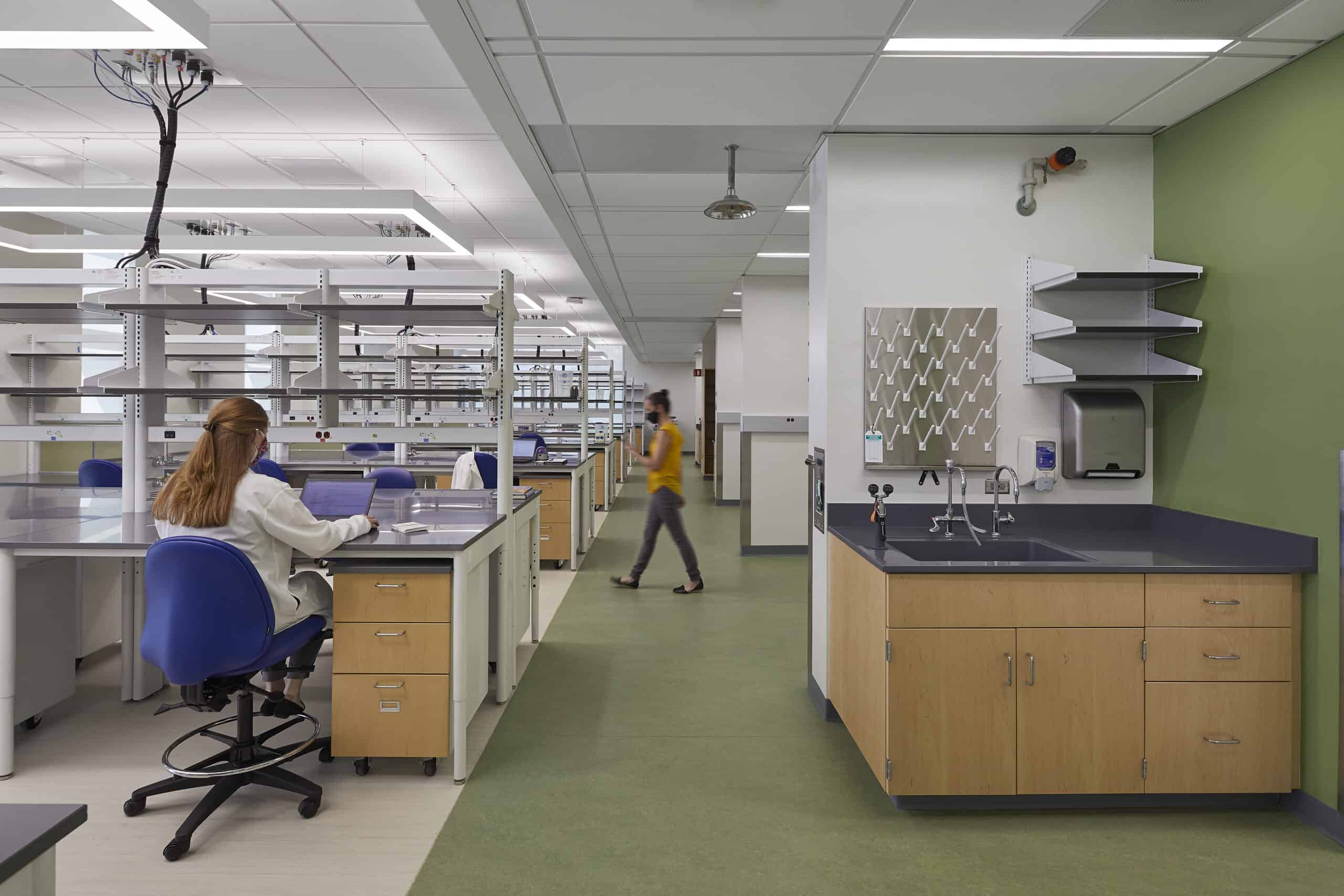With increased demand by life science companies for laboratory space and a long-term reduced need for traditional office space, there’s a growing trend to create successful lab facilities within the shell of a former office building. Little’s team has a long history of working with both building types and understands the considerations and opportunities critical to these conversions.
We’ll help you carefully consider every need – from site to facility infrastructure – to ensure your lab is programmed to your exact needs. After all, we know there’s no such thing as generic science or a generic lab.

While much success in the office-to-lab conversion lies in the building itself, it’s important to recognize any challenges and opportunities associated with the site.
- Know your neighbors and seek compatible business types
- Investigate adjacent exterior vibration and noise
- Study utilities, water source and quality
- Ensure access for daily deliveries, gas bottles, etc.
- Make accommodations for a utility yard for an emergency generator and LN2 and Co2 bulk tanks, if required, with the ability to refill
- Keep in mind the importance of having amenities, both passive and active
- Ensure the site is zoned for your science, as it may require a Change of Use based on zoning ordinances

Since offices are designed and built differently from laboratories, these conversions require experienced team members who can anticipate common structural roadblocks.
- Seek a minimum of 15’-16’ floor-to-floor height to allow for extensive air exhaust and ductwork
- Ensure structure can withstand 100 lbs/sf live load, 8,000 MIPS base for vibration
- Look for an ideal column spacing of 33’ but know it’s not always necessary
- Evaluate ability to modify roof structure to carry heavy HVAC systems and check zoning for roof screening of the larger units
- Know if you will have the ability to core drill the structure
- Understand that in light structures, bar joists are not capable of carrying heavy piping and duct systems
- Research vibration levels — typically slab on grade will meet criteria but upper floors may require strengthening

Facility needs for laboratories are beyond the standard design capacities of typical commercial buildings. It’s important to understand what substantial upgrades will need to be made to accommodate your lab-specific needs.
- Evaluate the ability to subdivide your space — 5/10/20,000 sf
- Determine your loading dock preference and whether to share it with other tenants
- Seek advantages such as common restrooms and collaboration spaces
- Ensure internal and external security
- Carefully inspect roof and architectural systems to ensure there is no air infiltration that can create moisture and pressure problems
- Be certain loading dock, corridors and service elevator can handle large equipment and hazardous materials — they should be separated for use with typical office functions
- Research the allowable limit of chemical and biologic hazardous materials and ensure fire ratings support these storage areas — taller buildings will limit size due to occupant safety, affecting the type of science you can conduct on various floors

Mechanical systems provided within a standard office building are well-known and focused on occupant comfort. It’s important to recognize that systems for lab systems are dramatically more complex.
- Know the existing system and its capability
- Once-through air is usually required for lab processes
- Recirculated air is appropriate for office functions
- Install capabilities for your labs to have controlled environments — temperature, humidity and pressurization
- Ensure existing ducts are not lined
- Be certain that exhaust and supply air is separated — never have fresh air intakes at the loading dock
- Ask if chilled water exists
- Evaluate opportunities for compressed air, vacuum, nitrogen and other gases
- Understand access to natural gas
- Be aware of air changes, depending on the function of the lab
- Evaluate whether there is separate air handling and exhaust systems from other building functions — vivariums and clean rooms will require significant ventilation

Lab space uses more power than a typical office building and generally requires a standby power generator to protect critical infrastructure systems and ongoing research. Additional service may require coordination with the municipal utility provider.
- Research an emergency generator size for coordination with site, landscaping and screening as well as access around the unit
Evaluate these general best practices for biomedical or life science labs:
- Lighting minimum 70 ft candle at bench, lighting spacing, location, height is critical as it relates to shadows
- Normal power 13-18 watts/sf
- Emergency power 3.5 watts/sf or more

Specialty plumbing must be included in the design to make a successful conversion from office to lab. A significant aspect of plumbing is focused on lab waste.
- Evaluate for clean water systems
- Test existing water systems for contaminants
- Make certain that waste piping systems for domestic use and lab waste are always separate, as lab waste piping is acid resistant
- Know the local requirements that will dictate whether waste piping goes to an outside collection tank where it can be neutralized before released to a general waste system OR whether each lab sink can have a collection point and test point
- Evaluate the fire protection system for capacity based on the use hazard

